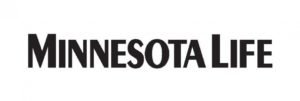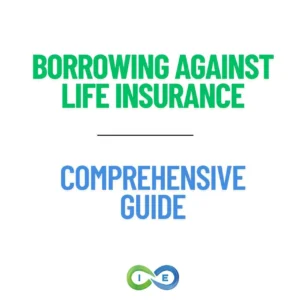If you are shopping for life insurance, you may be puzzled to hear your insurance agent use the word “tables” when describing how rates are determined. While the term may not apply to you if you are in good health and don’t work in an especially high-risk field, if you are subject to risk factors that could put you in the table rating category it is helpful to understand life insurance table ratings in the context of life insurance premiums.
This article will take a deep dive into how life insurance companies use tables to rate potential policy purchasers and what it means if you fall into a table risk category.
Basic Life Insurance Ratings
Life insurance premiums, the price you pay on a monthly or yearly basis to purchase life insurance, are determined by the insurer’s calculations as to the odds that a person will die within a certain amount of time. They use these odds to figure out the price you will pay to buy insurance from them.
Insurance companies place policyholders into groups defined by the level of risk involved in insuring them. When concerns related to an insured’s medical status or lifestyle elevate the risk of insuring them beyond standard levels, table ratings are invoked.
Before we cover table ratings in detail, let’s first take a look at how standard ratings function.
Standard Life Insurance Classifications
Most life insurance companies require applicants to take a life insurance medical exam.Your labs are then looked at by life insurance underwriters.
Life insurance underwriting looks at the results of your medical exam along with your family health history. Both will be studied by an insurance company before assigning a health class to your policy.
They will also consider lifestyle information along with health issues when determining where you fit in their standard risk classification or categorization system.
These ratings will differ from one insurer to the next, but there are often similarities between the systems they use. Commonly used standard ratings include:
- Preferred Select or Preferred Plus: The healthiest individuals are usually included in this classification. Generally, you need to have an average body weight and no family history of diseases or other factors that might cause an early death. This category is charged the lowest premiums.
- Preferred: One step below preferred plus, applicants receiving a preferred rate class may have small health issues, such as elevated blood pressure or less than ideal cholesterol ratios.
- Standard Plus: Applicants who fall into this category are usually in good health but face a health issue or lifestyle factor that keeps them out of Preferred Select or Preferred. Such issues could include high blood pressure, being overweight, borderline high blood sugar levels, etc.
- Standard or Regular: This category includes people who are of average health with normal life expectancy. They might experience problems with their weight or have a family history of health issues.
For smokers, the same categories are often used with the word smoker appended. For example, Preferred Smoker or Preferred Tobacco would be the classification for an individual who would be classified as Preferred if he or she didn’t smoke, with the same applying to a person classified as Standard Smoker or Standard Tobacco. Smokers are assigned higher premiums than non-smokers in whatever category they fall into.
Life Insurance Table Ratings
When an applicant for life insurance fails to qualify for one of the standard underwriting classifications, he or she is typically subject to being table rated.
Applicants who are table rated will pay an extra fee on top of the standard life insurance premiums they would normally be charged.
Essentially, table ratings can be triggered by any factor that raises the chances a person may suffer a premature death. The triggers for a table rating can be both medical and non-medical.
Life insurance companies generally will credit or debit an applicant based on various risk factors pertaining to medical history and lifestyle.
For example, a person with diabetes would receive a debit for that condition, for instance.
On the other hand, a person with a healthy lifestyle and superior cholesterol ratios would get a credit for that.
The greater the number of debits, the higher the premiums, while a high amount of credits will lower your premiums.
Some factors that can trigger a table rating include:
- Family history of heart disease or cancer
- Diabetes
- Obesity
- A criminal record or infractions such as multiple DUIs
- Previous heart attack or stroke
- Issues relating to mental health
- Racecar driving
- Flying small planes
- Rock climbing
- Skydiving
When a table rating is used, an insurer can refer to added risk factors to set policy premiums.
Applicants who are subject to table ratings aren’t given Standard or Preferred ratings, instead they are assigned a number or letter specifying their rating.
This table rating determines the additional percentage above the standard rate they will be charged to purchase life insurance.
While different insurers may use different table ratings, these ratings generally use numbers from 1 to 16 or letters from A to P, with each higher letter or number typically representing an increase of 25% above standard premium rates.
Premium Charges Under Table Ratings
The bottom line about table ratings is that they make insurance more expensive for those who are assigned one.
For instance, if you received a table rating of 1 or “A”, and your insurance premium would otherwise have been $200 a month, now it would be $250 ($200 + $200 x 25%).
If your table rating was 6, your premium surcharge would be 150% above the standard rate, so you would pay $500 per month ($200 + $200 x 150%).
Most insurers will add 25% per table rating step-up, but this is not compulsory, and some insurers will raise rates by different amounts when table ratings are assigned.
Alternatively, some companies choose to offer more competitive life insurance rates for table ratings to encourage people to apply with them versus a competitor.
This is why it is important to shop around for the right company when applying for life insurance with a pre-existing condition, or to avoid the medical exam altogether.
What Are Your Options If You Are Assigned a Table Rating?
If you are given a table rating, don’t despair, it may be possible to earn a better rating from another insurance company.
Insurance risk ratings are not standardized – insurance companies come up with their own systems for characterizing risk. This means that while one insurer may table-rate you, another insurer may not.
Because of this, getting life insurance quotes from a variety of insurance companies is recommended, especially if you are on the cusp of being table-rated.
Steps you can take if you are given a table rating include:
- Shop around: If one insurer gives you a table rating, this does not necessarily mean others will do so. Even if another insurer does table-rate you, they may give you a lower table rating, for instance, a 2 instead of a 4, which can mean significant savings in premium payments.
- Accept your policy and then reapply: Generally speaking, insurance companies will allow you to apply for a lower rating for a certain amount of time after you have accepted a policy. For example, if you were to lower your blood pressure or lose a lot of weight, you might reapply a few years after accepting a policy to get a better rate reflecting your improved health.
- Adjust coverage levels: Making changes to your policy’s coverage levels doesn’t eliminate a table rating, but it can reduce the premiums you are paying if they are unaffordable. If your health improved or other conditions that removed your table rating changed, you could reapply for a new policy and if accepted raise your coverage back to previous levels.
- Table Shave: In some cases, an insurance company will offer a table shave program enabling applicants to raise their health rating by as much as two table ratings if they conform to certain lifestyle guidelines or meet specified medical qualifications. Such programs are designed by the individual companies that offer them. These programs, when offered, are well worth pursuing, as moving up 2 or even 1 table can reduce your premiums significantly.
- Choose No Exam: You can also avoid the medical exam and choose no exam life insurance. If you are uncertain what might pop up on an exam it may be in your best interest to get approved with a company that offers life insurance without an exam.
Don’t forget to ask an insurance company why they have given you a table rating. In some cases, they may be using outdated or incorrect data to assign such a rating. To make sure this is not the case, you should find out why you have been table-rated and verify that correct information was used.
Conclusion
At I&E, we specialize in helping clients get the best possible rate class when applying for life insurance. If you recently were table rated, why not give us a call and see what we can do for you?





